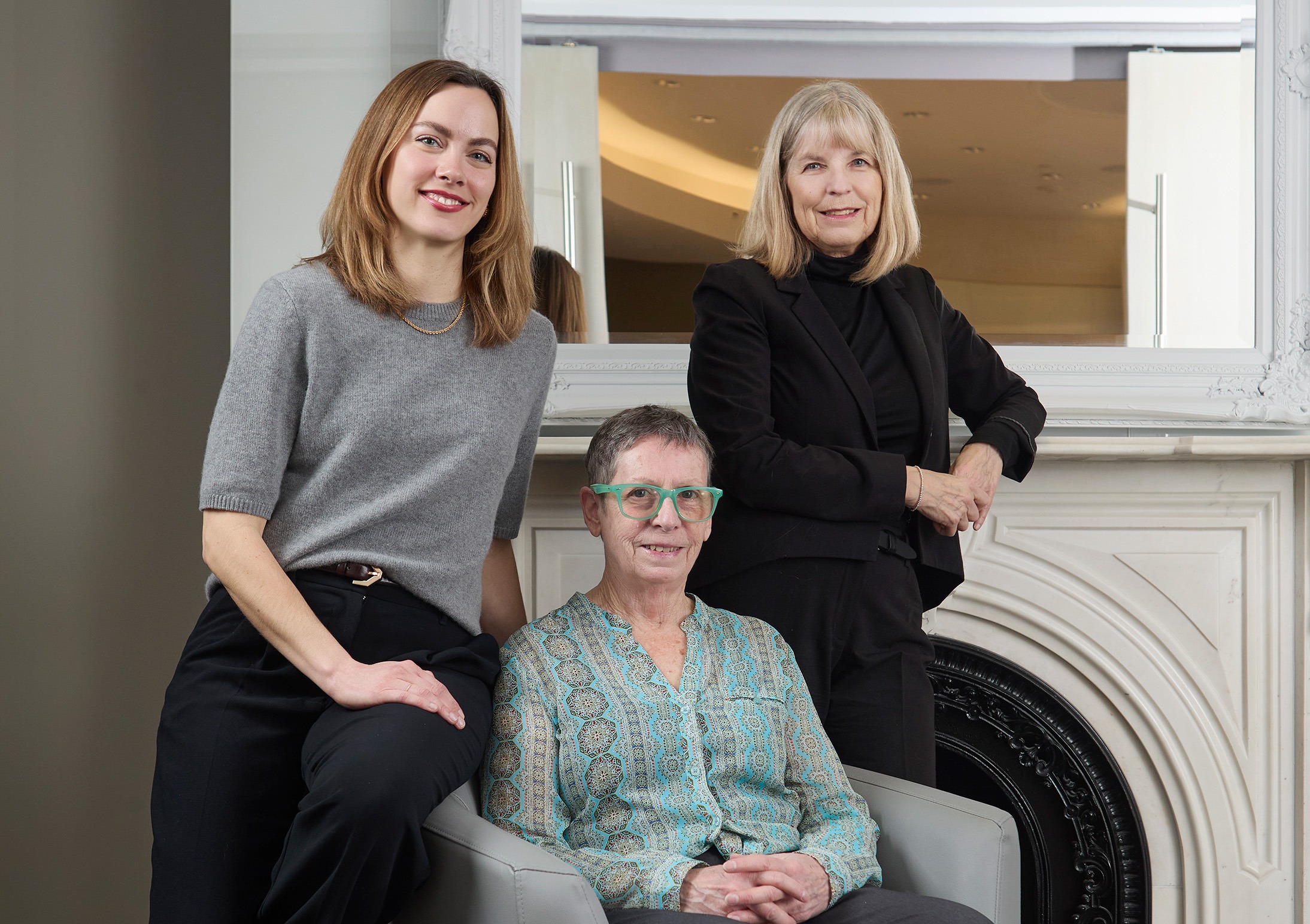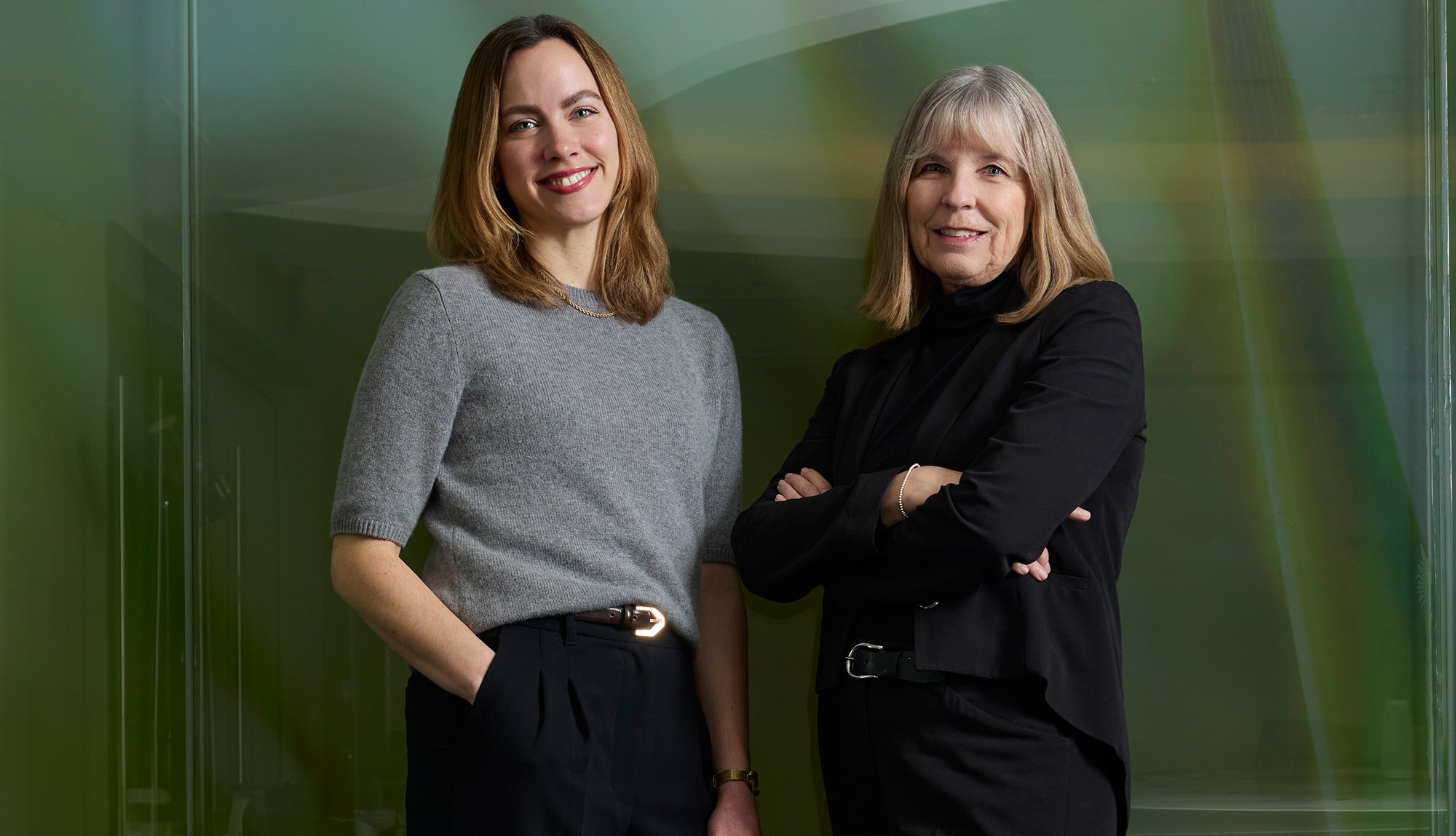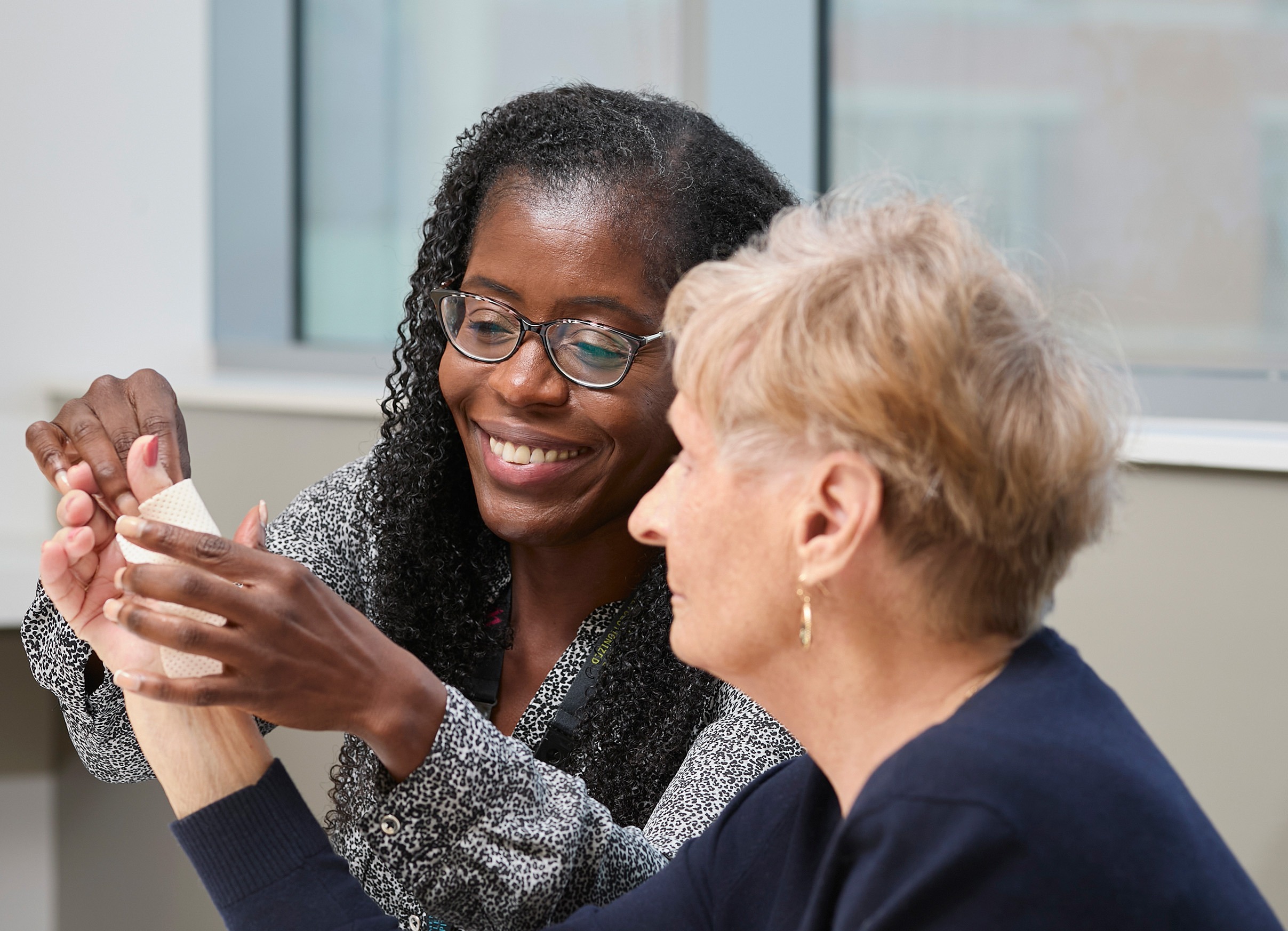Occupational Therapist Gitta Ankomah splinting a patient at WCH
Creating new possibilities for older women to age at home

Left to right: Rachel Savage, Jo-Anne and Dr. Paula Rochon
Creating new possibilities for older women to age at home

Left to right: Rachel Savage, Jo-Anne and Dr. Paula Rochon
Jo-Anne has lived in her co-op for 20 years. Following an incident in which an older woman became trapped in the co-op’s laundry room, she was inspired to establish the ‘aging in place’ committee which serves as a platform for older adults to unite and advocate for their growing needs within their building.
Now, picture this committee model extending to residential buildings and neighbourhoods throughout Canada—a model designed to listen to the needs of older women and implement necessary changes so that they can age safely in the comfort of their own homes.
Women’s Age Lab at Women’s College Hospital (WCH) is taking steps to turn this vision into reality.
With more than 30 per cent of the residents in her building being over the age of 65, Jo-Anne lives in a ‘Naturally Occurring Retirement Community’ (NORC)—a residential building not initially designed for older adults but with a substantial older population regardless. There are roughly 2,000 high-rise NORC buildings in Ontario alone.
Women’s Age Lab, working with the NORC Innovation Centre at the University Health Network, and partners including the City of Toronto, City of Barrie and Barrie Housing, were granted six years of federal funding from the Canadian Institutes of Health Research and the Public Health Agency of Canada to support NORCs.
“There are more NORCS than there are long-term care homes and retirement homes combined,” says Dr. Paula Rochon, geriatrician and founder of Women’s Age Lab. “Exploring ways to enrich these environments through tailored programs and opportunities for increased social connections is key. This not only helps our aging population stay healthy but allows them to stay in their homes, which is what most of them want.”
Community engagement is a cornerstone of the project, which is why the NORC ambassador program was established. With an ‘older adults empowering older adults’ approach, this initiative was co-designed to facilitate mutual support groups to help each other age in place.
“The UHN NORC Ambassador program is focused on empowering residents and building their capacity to organize and manage their own programs in their buildings,” says Rachel Savage, scientist at Women’s Age Lab and co-lead of the project. “We’ve been present at some of these ambassador group meetings, and we can already see the communities that are starting to build.”
As the research partner, WCH is poised to evaluate these meetings and identify effective strategies to inform the implementation of enhanced NORCs across Canada and beyond. In line with WCH’s commitment to delivering innovative and patient-centred research, these ambassador meetings are a catalyst for learning more about an area that mostly remains untapped.

Left to right: Rachel Savage and Dr. Paula Rochon
“The unrealized potential of NORCs is significant,” says Savage. “Because of this, there isn’t a ton of pre-existing information on how to successfully implement these enhanced models across different types of settings in Canada.”
Developing the foundational data collection for this research is a key milestone in discovering new approaches for older adults to age – not just in place – but in the right place.
“Our research adopts an equity-focused lens,” says Dr. Rochon. “We recognize that the needs of residents vary across the different types of NORC buildings, which is why we’re studying a diverse range of buildings spanning from condos to co-ops to rent-geared-to-income housing. We’re also exploring the benefits of enhanced NORCs among women and men, gender-diverse individuals and ethnically diverse groups.”
Interventions over the course of the project will also include on-site staff with specialized training, the implementation of mobile integrated health units to support clinical needs and social and health programming.
For Jo-Anne, an aging-in-place committee leader, NORC programs have already enriched her life as she now enjoys an exercise program, coffee group, crafts programs, and in-unit hearing loss screenings.
“It makes me feel good that I have a large network. It’s helped us focus and think outside the box when putting events together,” she says. We can also advocate for changes. For example, we no longer have round doorknobs, as lever door handles can help ease arthritis symptoms. And most of our shared spaces now have automatic door openers.”
On a health system level, the team is looking forward to exploring how enhanced NORC programs will impact future healthcare utilization, such as emergency room visits, hospitalizations, and engagement with primary care.
“Offering enhanced support within NORCs is a low-cost approach to enable healthy aging,” says Dr. Rochon. “We’re bridging connections between older adults and their communities.”
With year one complete, the next phase will include spreading and scaling the project outside of Toronto, with data collection and implementation plans in Barrie.
This will also include taking the learnings to build an implementation toolkit that will support the project’s scalability.
“I’ve met so many people who are excited about having a NORC program in their building or community,” Savage shares. We’re looking forward to collecting resources that will give people the tools they need to implement the program successfully.”
Now more than ever, there’s a strong desire among older adults to age in the homes of their choosing. The NORC model provides Canadians with new possibilities to age in place with dignity, choice and autonomy.
“When I think of what the project is doing, I think of one word – encouraging,” says Jo-Anne. “There’s a sense of togetherness – of not being alone. Not just physically, but emotionally.”

Occupational Therapist Gitta Ankomah splinting a patient at WCH

Occupational Therapist Gitta Ankomah splinting a patient at WCH
Older women grappling with chronic health issues, cognitive decline, pain, injury risks and caregiver burnout may find themselves moving to long-term care facilities sooner than they would like. Occupational therapists (OTs) can play a vital role in helping them overcome obstacles that could hinder their ability to age in place through targeted interventions.